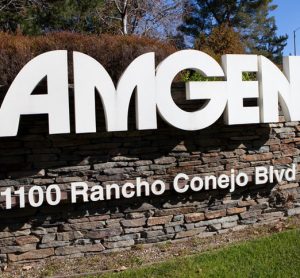Amgen announces positive top-line results from second Phase 3 study of AMG 416 for the treatment of secondary hyperparathyroidism in patients with chronic kidney disease receiving hemodialysis
Posted: 19 August 2014 | | No comments yet
Amgen announced that a second placebo-controlled Phase 3 study evaluating AMG 416 for the treatment of secondary hyperparathyroidism in patients with chronic kidney disease, receiving hemodialysis, met its primary and all secondary endpoints…


Amgen (NASDAQ:AMGN) today announced that a second placebo-controlled Phase 3 study evaluating AMG 416 for the treatment of secondary hyperparathyroidism (SHPT) in patients with chronic kidney disease (CKD), receiving hemodialysis, met its primary and all secondary endpoints. The primary endpoint was the proportion of patients with > 30 percent reduction from baseline in parathyroid hormone (PTH) levels during an Efficacy Assessment Phase (EAP) defined as the period between weeks 20 and 27. These results follow the recent announcement of positive data from a prior placebo-controlled Phase 3 study of AMG 416 which was similar in design and size.
In the AMG 416 group, 74.0 percent of patients achieved a > 30 percent reduction from baseline in PTH compared with 8.3 percent in the placebo arm, a statistically significant result. Secondary endpoints included the percent change from baseline during the EAP in serum phosphorus (P) concentration (mean changes of -7.71 and -1.31 percent among patients in the AMG 416 and placebo arms, respectively) and corrected calcium (cCa) concentration (mean changes of -7.29 and 1.18 percent among patients in the AMG 416 and placebo arms, respectively). Both of these secondary endpoint results were statistically significant.
“The results from this second Phase 3 study help to confirm that AMG 416 could become an important new treatment option for dialysis patients with secondary hyperparathyroidism,” said Sean E. Harper, M.D., executive vice president of Research and Development at Amgen. “Despite the variety of options available for the treatment of this disease, an unmet need remains for an intravenous therapy that can be administered along with hemodialysis. We look forward to sharing results of a head-to-head study evaluating AMG 416 compared to cinacalcet next year.”
Treatment-emergent adverse events (TEAEs) were reported in 91.6 and 78.7 percent of patients who received AMG 416 and placebo, respectively. TEAEs that were reported in > 10 percent of patients who received AMG 416 included (AMG 416 vs. placebo, respectively): blood calcium decreased (61.0 and 8.3 percent), nausea (12.4 and 5.1 percent), muscle spasms (12.0 and 7.1 percent) and vomiting (10.4 and 7.1 percent). TEAEs of hypocalcemia (symptomatic) were reported in 7.2 percent of patients who received AMG 416 versus 0.4 percent in the placebo group. Serious adverse events (SAEs) were reported in 27.1 and 30.7 percent of patients who received AMG 416 and placebo, respectively.




